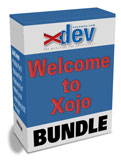Article Preview
Buy Now
REVIEW
Book: Designed for Use
Issue: 10.2 (January/February 2012)
Author: Tam Hanna
Article Description: No description available.
Article Length (in bytes): 3,172
Starting Page Number: 16
Article Number: 10203
Related Web Link(s):
http://www.oreilly.com
Full text of article...
In today's style- and usability-driven world, badly designed user interfaces will not be tolerated by all but the most vertical user groups. Unfortunately, GUI is not taught in API documentations or IT schools—but it can, fortunately, be learned easily.
Lukas Mathis' book is structured into three parts, which are subdivided into small chapters which discuss the individual patterns. Part one is called research, and looks at the preliminary processes done to determine what to implement in an application. Topics include various techniques used for requirement engineering; efficient text creation and techniques like card sorting and mental models.
At the end of part one, you know which features will go into your app and how they will be arranged logically. Part two is called Design, and looks at the various aspects of designing user interfaces. The treatment starts by looking at methods used to create user interface concepts; then looks at paper prototypes and goes on to topics like animation, preferences and natural user interfaces.
After that, you can proceed to coding the GUI. Finally, part three looks at the implementation of user interfaces. Topics covered here include both usability research and the tracking of usability data. The goal of this segment is to provide ideas for adding new features and improving usability in future releases.
The individual chapters come with an additional catalogization aid: "I" chapters explain ideas, while "T" chapters look at actual techniques. Each of the chapters are full of extremely valuable images; the book is easy to read even for non-native speakers.
Designed for Use can be recommended to both professional and beginner GUI designers. It covers a huge variety of design methods, ensuring that both advanced and greenhorn designers will find something new. Like Jenifer Tidwell'sDesigning Interfaces book, it IMHO belongs on every programmer's shelf.
End of article.































